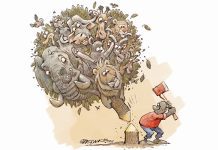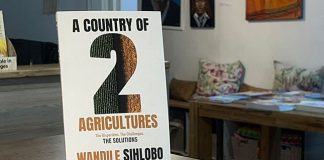The United Nations’ Millennium Development Goals (MDGs) – set out in 2000 – are ambitious indeed. They include, among others, ending extreme world poverty and hunger, achieving universal primary education, reducing child mortality rates, ensuring environmental sustainability, and developing a global partnership for development – all by 2015.
Two key initiatives have since been developed in an effort to achieve these goals: the Doha Development Agenda (DDA), which aims to lower global trade barriers, and Economic Partnership Agreements (EPAs), which seek to liberalise trade specifically between the EU and African, Caribbean and Pacific countries.
The question of most interest to us in Africa is: are these two schemes helping the continent achieve the MDGs? The United Nations Economic Commission for Africa (UNECA) recently investigated, via a workshop format, the linkages between trade liberalisation and MDGs, and its findings are less than encouraging.
The Doha Development Agenda
In its investigation, UNECA asked whether the DDA could help achieve the MDGs for the least developed countries, with particular focus on agriculture. This sector, by reducing food insecurity, has a potentially critical role in achieving the MDGs. The launch of the DDA resulted in great optimism for developing countries. Since then, however, entrenched positions, lobbying power and developed-world agricultural subsidies, which undermine African competitiveness, have dimmed these hopes.
A 2008 study by the International Food Policy Research Institute found that the DDA trade reforms required higher tariff cuts by countries with higher levels of development. The study also found that with trade reform, African countries tend to gain less access to foreign markets than non-African countries, and total exports of least developed countries also diminish.
This is due to preference erosion (in other words, the removal of preferential market access) as well as product specialisation in high-income developed countries. This erosion affects agricultural sectors such as rice, sugar, meat and meat products, as well as in industrial sectors such as textiles and clothing.
Furthermore, the exports of least developed countries to medium- and lower-income countries increase at a lower rate than that of high-income countries. To sum up, the DDA’s trade reform reduces the real income of nearly all Africa’s least developed countries, as their terms of trade deteriorate on account of erosion of preferences and rising world agricultural prices for net food importing countries.
Liberalisation in services, such as the movement of skilled labour, helps to slightly improve the situation for sub-Saharan Africa, but the overall impact of DDA trade reform remains negative.
Economic partnership agreements
EPAs are based on the Cotonou Partnership Agreement (CPA) between the African Caribbean and Pacific (ACP) countries and the EU. The core objectives of the CPA are to enhance the trading capacity of the small landlocked and island ACP countries, and parties commit themselves to ensuring special and differential treatment for all ACP countries.
The problem, however, is that the developmental objectives of the EPAs are not crafted to work smoothly with existing regional economic communities (RECs) on the continent, and EPA negotiations between these RECs have not worked. For instance, Zimbabwe belongs to COMESA (the Common Market for Eastern and Southern Africa) as well as to SADC, while Tanzania and the DRC have joined both ECCAS (the Economic Community of Central African States) and COMESA respectively for the purpose of EPAs. This negatively impacts on regional integration aims.
Lack of development and diversity
Behind all these regional problems lies the stark reality that Africa remains a marginal player in world trade. The continent contributed 6% of world trade in 1980 and just 3% in 2008, and its trade structure still lacks diversity in terms of production, exports and markets. This means that negotiations to liberalise the economies of Africa’s countries will be a futile exercise until this situation improves.
In addition, it seems that trade liberalisation alone is simply not stimulating growth and development. Evidence has shown that, over time, the African productive structure has become less diversified, even with the liberalisation of trade in the 1980s and 1990s. As part of its investigation, UNECA asked: will EPAs change this structure or make the situation worse?
They have certainly been contentious, and consensus between the EU and Africa has still not been reached. Countries that only initialled the agreements have not moved towards signing the interim agreements, and those that signed the initialled agreements have not ratified them, although some have indicated their desire to do so.
In the light of this, the EU’s decision to revoke all preferences currently enjoyed by Africa if the EPAs remain uncompleted by 2014 is a positive development. African civil society organisations have long opposed EPAs, saying that they will retard their ability to achieve the MDGs, and scrapping them would allow other options to be explored.
The Solution
A key lesson of the above is that increasing trade to the EU and US partners alone is not enough – Africa needs to encourage both intra-Africa and intra-REC trade. And for this, it needs to build its infrastructure urgently. The following should therefore take place in conjunction with trade liberalisation:
- Investment in infrastructure geared towards production and export: roads, railways, port facilities, power generation, water supply, telecommunications, and information and communications technology.
- Increased public investment in research and development, rural infrastructure, and health and education.
- The development of domestic policy regulatory frameworks to regulate the movement of goods and services between East African and Southern African countries. Africa stands to achieve very few of the MDGs by 2015. But in order to have at least a chance of succeeding, it needs to develop its trade.
Unfortunately, the benefits of trading under the the World Trade Organisation’s regulations will be limited because it sees trade as merely the movement of goods and services across borders, not as a means of development. Africa therefore needs to develop its own regional trade, harmonising trade preferences for its countries into a unified system to create regional value chains.
Contact Bonani Nyhodo on 012 341 1115 or [email protected]. Adapted from International TradeProbe, No 37, January 2012. The TradeProbe is a joint initiative by the National Agricultural Marketing Council and the department of agriculture’s Directorate International Trade.













